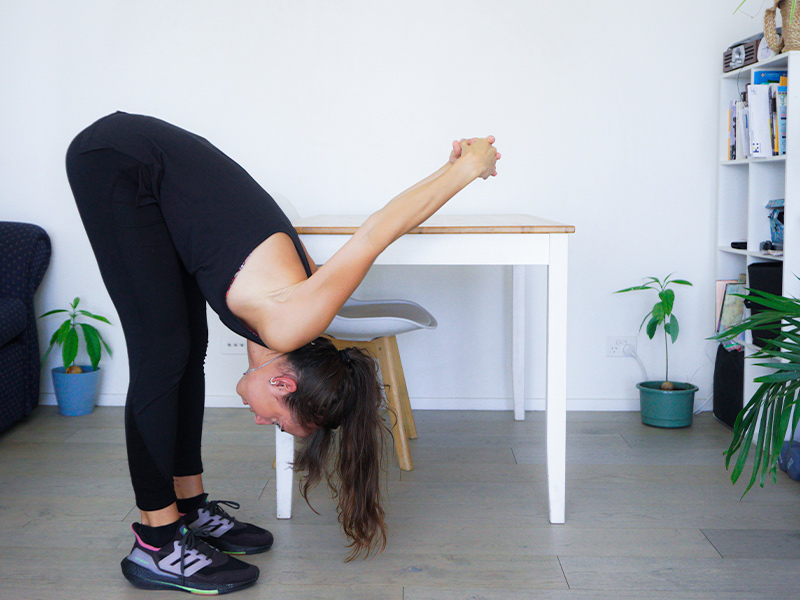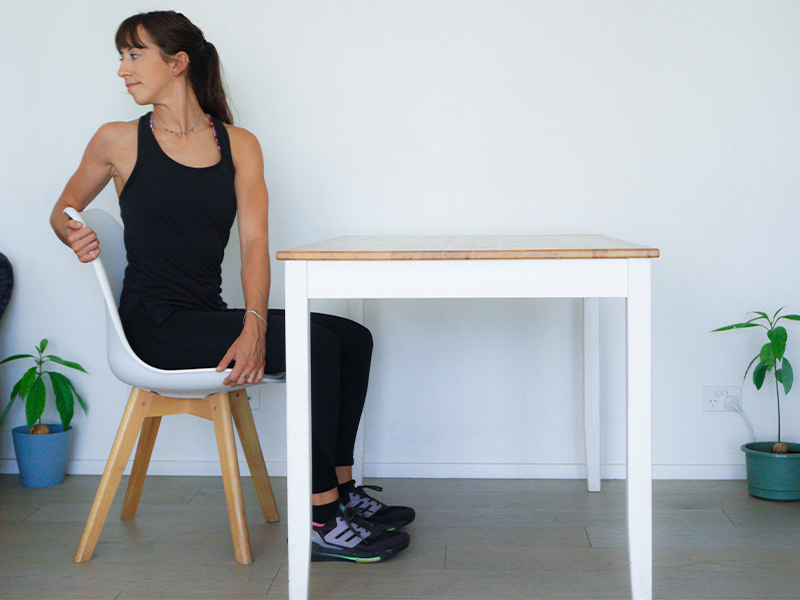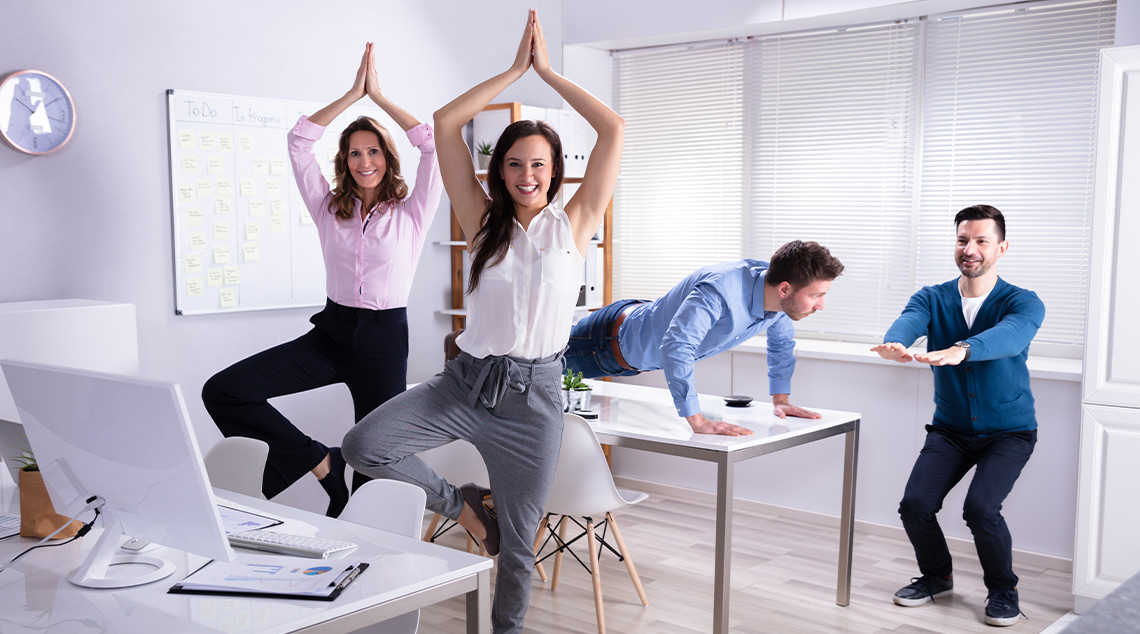Discover the therapeutic benefits of taking a yoga break at work
Working long hours? Here’s how basic workplace yoga poses during your break can help release muscle aches and prevent injury.
Australians who work full time can spend more than 30 per cent of their day at work.
Researchers say the average person will spend 90,000 hours working during their lifetime, representing a third of a lifetime devoted to labour.
How time at work impacts your body
Safe Work Australia reports that 60 per cent of severe work-related injury claims were musculoskeletal disorders, including soft tissue disorders and trauma to muscles or tendons.
According to Lakeside Sports Medicine Centre physiotherapist Nick Leman, staying long hours in the same position can result in body aches.
“With the lack of movement, the joints of the spine get very stiff,” Nick says.
However, just a few breaks to move around during working hours can go a long way.
“We observe a lot of neck pain, especially in people who sit for long hours,” he says.
“For someone who works standing up, it’s more like a pressure on the lower back.”
In this scenario, Nick says stretching can help combat pain and poor posture.

How workplace yoga can help
Yoga instructor Gisele Cabasa says anyone of any age and body type can practise yoga and adapt some poses to the workplace.
“If you’re sitting all day, you have much pressure on the shoulders and neck,” Gisele says.
“When you feel tense, you can do poses like rolling your shoulders and twisting your spine.”
She says for those who work standing up, poses that reverse blood flow can help.
“(Try) Leaning forward, reaching your arms straight up, or lying down and lifting your legs,” she suggests.
Gisele also points out that yoga in corporate environments has been increasing.
“Many corporates, especially after the pandemic, are bringing yoga to the offices,” she says.
“It helps not only the person but also the team … the energy changes in the environment in the workplace.”
Benefits of workplace yoga
It is a change that Natalie Osborne, 55, who has worked for more than 25 years in corporate media, has experienced.
Practising yoga for the past 30 years, Natalie used some yoga techniques to deal with the fast-paced routine of being a mother of three and working more than eight hours a day under pressure.
“In the corporate world, there are conflicts, deadlines and pressures, and the breath of yoga can help you calm down in those situations,” Natalie says.
She remembers waking up at 5am, working until 11pm or later, washing, cleaning and cooking at home, and how tired her body was back then.
“I was stressed, I was always going 100 miles per hour, but I didn’t understand my body,” she says.
“Yoga made me understand how my body was and what to do to improve.”
Yoga poses you can try at work
How often have you complained of back, shoulder, wrist and leg pain, or posture-related headaches after work?
Gisele suggests doing the following yoga poses during your shifts:

Seated twist
This pose stretches the back muscles, and stimulates the digestive organs.
- Sit with your feet flat on the floor, twist slightly to the right, grab the back of the chair with your right arm, and place your left hand on the right side of the chair near your knee.
- Inhale, feel your spine lengthen, then exhale while twisting deeper.
- Look over your right shoulder and hold for five breaths.
- Repeat on the left side.
- Forward fold with shoulder stretch
- This pose is great for stretching the shoulders, wrists and neck, and frees up the back.
- Stand with your feet hip-width apart, and interlace your fingers behind your back.
- While inhaling, pull your hands down, open your chest, exhale, bend forward, slightly bend your knees and arms, and relax the neck.
- Breathe deeply, holding for about 10 seconds.
Yogi squat
This helps free up the lower back and hips.
- Stand straight, feet slightly wider than hip-width apart, toes pointing out and heels in.
- Take a deep breath, bend your knees and squat as far as you can as you exhale, keeping your palms together in front of the chest, elbows pushing knees back.
- Keep the spine straight, and breathe deeply while you hold for 30 seconds.
More on staying well on the job – and after work:
- 5 quick exercises to get you energised at work
- How to give yourself some TLC at work
- Simple ways to incorporate more wellness into your workday
- After-work rituals that will improve your health
Written by Allana Ferreira.







